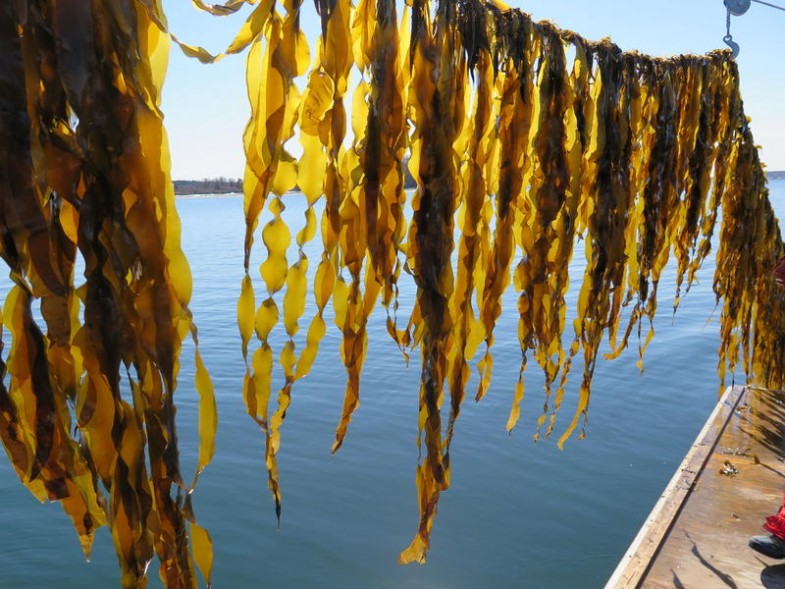By Heather Goldstone / WCAI
We tend to think of spring as planting time, but kelp farmers in the Gulf of Maine are in the midst of their annual harvest right now.
Growers and ocean researchers say kelp could be a huge win-win-win – improving the local environment, boosting other fisheries, and all while providing a saleable food source.
Ten years ago, there were no kelp farms in the northeast. Now, there are more than a dozen. So, what gives?
“I think what’s been driving the increase is that the demand for domestically produced seaweed is rapidly growing in the U.S., principally due to American consumers’ increased awareness of the quality of waters where some of their [imported] seaweed may be coming from,” said Paul Dobbins, president of Maine-based kelp distributor Ocean Approved. “And the wild harvest, which has been going on for centuries here along the New England coast, can only provide so much.”
There’s also growing recognition among scientists that farmed seaweed can absorb excess nutrients and carbon dioxide, improving local water quality and boosting nearby fisheries, particularly shellfish. Nichole Price of Bigelow Laboratory for Ocean Sciences and Susie Arnold of Island Institute have been working with Dobbins to measure those benefits.
“The data we’re able to gather suggests they’re absorbing a sufficient amount of carbon dioxide to really remediate the water quality in the immediate area, or what we like to refer to as creating a halo of higher water quality immediately around the kelp farm,” Price explained.
That’s in large part because kelp grows so quickly - from microscopic to dozens of feet long in a matter of months. That rapid growth requires the plants to suck up a lot of nutrients and carbon dioxide. In turn, the large kelp plants produce a lot of potential food.
Dobbins currently grows four locally-sourced, native species of kelp, and his company has developed different products, depending on the taste and nutrition of each different species.
Dobbins says his favorite way to use kelp is in a soup with carrots, ginger, and garlic. Price says favors the ground kelp cubes that can easily be added to a smoothy. Others suggested dried, applewood smoked seaweed; seaweed sautéed with green beans, carrots and onions; and seaweed scones.
How do you take your kelp?
